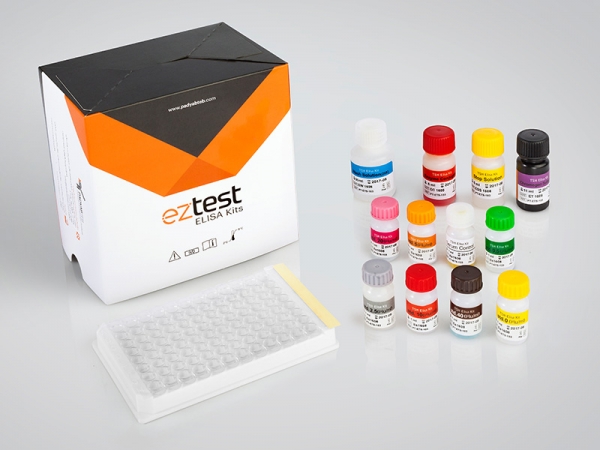| Name | TSH ELISA Test |
| Full name | Human TSH ELISA Test Kit |
| Category Name | Thyroid ELISA kits |
| Test | 96 |
| Method | ELISA: Enzyme Linked Immunosorbent Assay |
| Principle | Sandwich Complex |
| Detection Range | 0-40µIU/mL |
| Sample | 50µl Serum |
| Sensitivity | 0. 05µIU/mL |
| Total Time | ~60 min |
| Shelf Life | 12 Months from the manufacturing date |
TSH ELISA kit description:
The Diagnostic Automation TSH ELISA is intended for the quantitative determination of the thyroid stimulating hormone (TSH) concentration in human serum.
Introduction
TSH (thyroid stimulating hormone) is secreted by the anterior lobe of the pituitary gland. It is a glycoprotein consisting of two chemically different subunits, alpha and beta which are combined together by non-covalent bonds. The α (alpha) subunit is nearly identical to that of glycoprotein hormones including human chorionic gonadotropin (hCG), luteinizing hormone (LH), and follicle-stimulating hormone (FSH). The β (beta) subunit (TSHB) is unique to TSH, and therefore determines its receptor specificity. TSH induces the production and release of thyroxine (T4) and triiodothyronine (T3) from the thyroid gland. The release of TSH is regulated by a TSH-releasing hormone (TRH) produced by the hypothalamus. The levels of TSH and TRH are inversely related to the level of T3 and T4 thyroid hormones. When there is a high level of thyroid hormone in the blood, less TRH is released by the hypothalamus, so less TSH is secreted by the pituitary. The opposite action will occur when there is decreased thyroid hormone in the blood. This process is known as a negative feedback mechanism and is responsible for maintaining the proper blood levels of these hormones. The determination of serum or plasma levels of thyroid stimulating hormone (TSH or thyrotropin) is recognized as a sensitive method in the diagnosis of primary and secondary hypothyroidism. High serum levels of TSH is seen in primary hypothyroidism due to thyroid dysfunction and secondary hyperthyroidism due to inefficiencies in the pituitary and also lower level of TSH serum is seen in primary hyperthyroidism and secondary hyperthyroidism, due to pituitary or hypothalamus anomalies.
Principle of the assay
This ELISA test is based on the principle of a solid phase enzyme-linked immunosorbent assay. The assay system utilizes a unique monoclonal antibody directed against a distinct antigenic determinant on the intact TSH molecule. An anti-TSH antibody is used for solid phase immobilization, and another anti-TSH antibody is used in the antibody-enzyme (horseradish peroxidase) conjugate solution. The test sample is allowed to react simultaneously with the two antibodies, resulting in the TSH molecules being sandwiched between the solid phase and enzyme-linked antibodies. After 45-minute incubation at room temperature, the solid phase is washed with washing solution to remove unbound labeled antibodies. Then substrate solution and chromogen solution are added and incubated for 15 minutes, resulting in the development of blue color. The color development is stopped with the addition of stop solution, and the resulting yellow color is measured spectrophotometrically at 450 nm. The concentration of TSH is directly proportional to the color intensity of the test sample.



